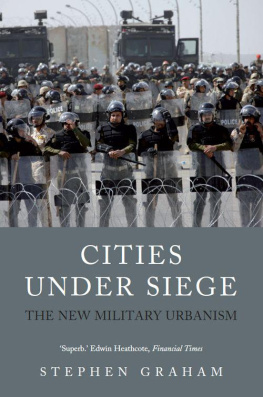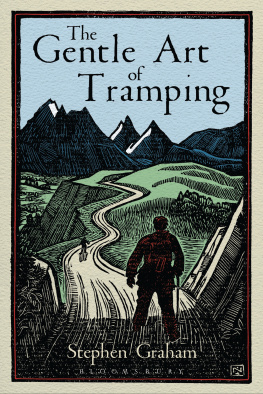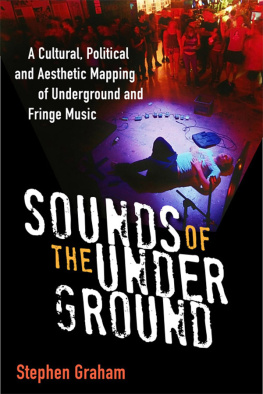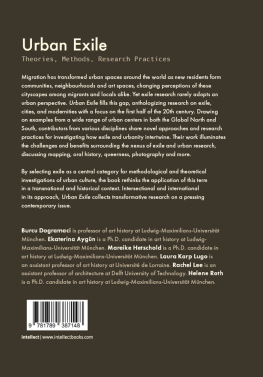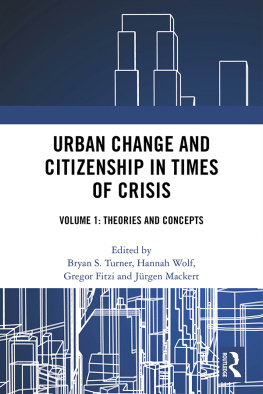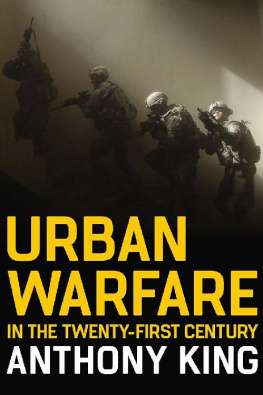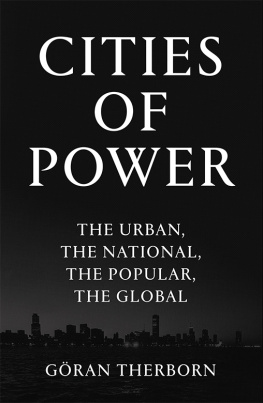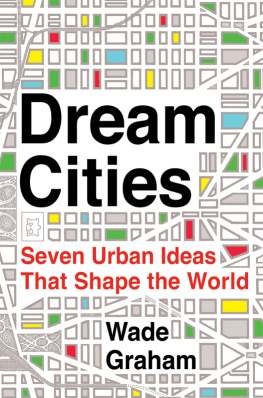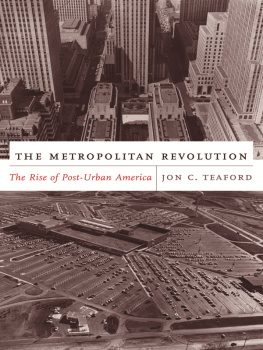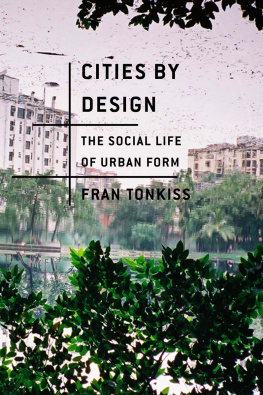Cities Under Siege
STEPHEN GRAHAM is Professor of Cities and Society at Newcastle University and previously taught at Durham and MIT, among other universities. He is the author of several books, including Disrupted Cities; Cities, War and Terrorism; The Cybercities Reader; and (with Simon Marvin) Splintering Urbanism.
Cities Under Siege:
The New Military Urbanism
Stephen Graham

First published by Verso 2010
This paperback edition first published by Verso 2011
Stephen Graham 2011
All rights reserved
The moral rights of the author have been asserted
1 3 5 7 9 10 8 6 4 2
Verso
UK: 6 Meard Street, London W1F 0EG
US: 20 Jay Street, Suite 1010, Brooklyn, NY 11201
www.versobooks.com
Verso is the imprint of New Left Books
E-BOOk ISBN: 9781844678365
British Library Cataloguing in Publication Data
A catalogue record for this book is available from the British Library
Library of Congress Cataloging-in-Publication Data
A catalog record for this book is available from the Library of Congress
Typeset in Minion Pro by Hewer Text UK Ltd, Edinburgh
Printed in the US by Maple Vail
For Doreen and Margaret
Political struggles are not fought on the surface of geography but through its very fabrication.
Steve Pile,
The Troubled Spaces of Frantz Fanon
Today, wars are fought not in trenches and fields, but in living rooms, schools and supermarkets.
Sultan Barakat,
City War Zones
Contents
Acknowledgements
During my time at Durham Universitys geography department, I was fortunate to be surrounded by an extraordinary range of friends and scholars who address the politics of geography with verve, power and creativity. I have learned an immeasurable amount from working amongst them, and they have been immensely important to the genesis of this book. Many have been especially kind commenting on drafts and providing ideas. Thanks, in particular, to Ash Amin, Louise Amoore, Harriet Bulkeley, Ben Anderson, David Campbell, Mike Crang, Angharad Closs Stephens, Stuart Elden, Alex Hall, Paul Harrison, Kathrin Hrschelmann, everyone at IBRU, Francisco Klauser, Colin McFarlane, John Mendel, Christine McEwan, Gordon McLeod, Rachel Pain, Marcus Power, Joe Painter and Divya Tolia-Kelly.
Further afield, I have received vital long-term encouragement from colleagues who have done much to open up the agendas that this book has taken up. I have also benefited from a wide range of critical feedback, which is especially important to a book of this breadth. My debts here are too numerous to list in full. But thanks, in particular, to Rowland Atkinson, John Armitage, Kirstie Ball, John Beck, Zygmunt Bauman, Ryan Bishop, Alastair Bonnett, Neil Brenner, Judit Carrera, Bob Catterall, Greg Clancey, Jon Coaffee, Deborah Cowen, Jordan Crandall, Lieven De Cauter, Simon Dalby, Mike Davis, Ashley Dawson, Volker Eick, Keller Easterling, Ulrike Engel, Derek Gregory, James Harkin, Ken Hewitt, Bryan Finoki, Omar Jabary Salamanca, Caren Kaplan, Maria Kaika, Roger Keil, Stephen Legg, Patrick LeGals, Setha Low, David Lyon, Peter Marcuse, Eduardo Mendietta, Deborah Natsios, Clive Norris, Vyjayanthi Rao, Neil Smith, Michael Sorkin, Eric Swyngedouw, Nigel Thrift, Nick Turse, Robert Warren, Eyal Weizman, David Wood, Elvin Wyly, Alison Williams, Rachel Woodward, Steve Wright, Charles Zerner and Elia Zureik. Grateful thanks also to the support of New York Universitys department of sociology especially to Neil Brenner and Harvey Molotch which allowed me to visit in November 2007. I must emphasize, of course, that all mistakes and weaknesses of the current work remain my own.
Grateful appreciation is due to the Economic and Social Research Council for supporting the Contested Borders project (RES-155-25-0087) that provided many of the insights developed in .
The visual material in this book draws on the work of a large number of friends and colleagues. Many thanks to Lisa Benton-Short, Adam Broomberg, Oliver Chanarin, Ben Colebrook, Teddy Cruz, Keller Easterling, Ulrike Engel, Bryan Finoki, Mark Gillem, Francisco Klauser, Paula Levine, Deborah Natsios, Jereemy Nemeth, Clive Norris, Steve Rowell, Anne-Marie Schleiner, Elin OHara Slavick, John Young and Micah Ian Wright for kindly providing images. I am also extremely grateful to Michele Allan and Chris Orton for their excellent job preparing the line-drawn tables, maps and figures. Thanks also to Rayya Badran for suggesting the cover image.
Penultimately, I should note that previous versions of parts of this work have already been published as follows: Introduction as a paper in City (13:4, November 2009). (as an article in City 9: 2, July 2005, and in different forms as chapters in two books: Allan Pred and Derek Gregory, Violent Geographies (New York: Routledge, 2006), and Eric Swyngedouw, Nick Heynen and Maria Kaika (eds), In the Nature of Cities (London: Routledge, 2005).
Finally, thanks to Simon Marvin for the Haifa beers in 2002 that got this started; to Tom Penn and Mark Martin at Verso for perfect encouragement; to Avis Lang and Noah Eber-Schmid for, respectively, superb copy-editing and fact-checking; to Palma, Lynn and Sally for the time to finish; and, above all, to Annette, Ben and Oliver, for the light and love that allowed me to get to the other side.
Stephen Graham, Newcastle
Introduction: Target Intercept
On 14 November 2007, Jacqui Smith, then the UKs home secretary, announced one of the most ambitious attempts by any state in history for the systematic tracking and surveillance of all persons entering or leaving British territory. The highly controversial e-Borders programme aims to deploy sophisticated computer algorithms and data-mining techniques to identify illegal or threatening people or behaviour before they threaten the UKs territorial limits. The programme utilizes technology developed by the Trusted Borders consortium, led by the massive Raytheon defence corporation.
The e-Borders project is based on a dream of technological omniscience: to track everyone flowing across the UKs borders, using records of past activity and associations to identify future threats before they materialize. Smith promised that when the system is finally functional in 2014 although many argue that it is unworkable border control and security will be reinstated for the UK in a radically mobile and insecure world. All travellers to Britain will be screened against no-fly lists and intercept target lists, she predicted. Together with biometric visas, this will help keep trouble away from our shores As well as the tougher double check at the border, ID cards for foreign nationals will soon give us a triple check in country.
Smiths language here target lists, screening, biometric visas and so on reveals a great deal. The massive global proliferation of deeply technophiliac state surveillance projects like the e-Border programme signals the startling militarization of civil society the extension of military ideas of tracking, identification and targeting into the quotidian spaces and circulations of everyday life. Indeed, projects like this one are more than a states responses to changing security threats. Rather, in a world marked by globalization and increasing urbanization, they represent dramatic attempts to translate longstanding military dreams of high-tech omniscience and rationality into the governance of urban civil society.
With both security and military doctrine within Western states now centred on the task of identifying insurgents, terrorists and an extensive range of ambient threats from the chaos of urban life, this fact becomes clearer still. Moreover, whether in the queues of Heathrow, the tube stations of London or the streets of Kabul and Baghdad, the latest doctrine stresses that ways must be found to identify such people and threats before their deadly potential is realized, at a point when they are effectively indistinguishable from the wider urban populace. Hence the parallel drive in cities within both the capitalist heartlands of the global North and the worlds colonial peripheries and frontiers to establish high-tech surveillance systems which mine data accumulated about the past to identify future threats.

